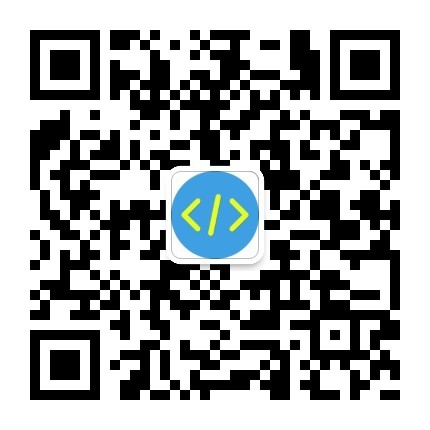C#9.0新特性詳解系列之六:增強的模式匹配
阿新 • • 發佈:2020-12-14
自C#7.0以來,模式匹配就作為C#的一項重要的新特性在不斷地演化,這個借鑑於其小弟F#的函數語言程式設計的概念,使得C#的本領越來越多,C#9.0就對模式匹配這一功能做了進一步的增強。
為了更為深入和全面的瞭解模式匹配,在介紹C#9.0對模式匹配增強部分之前,我對模式匹配整體做一個回顧。
## 1 模式匹配介紹
### 1.1 什麼是模式匹配?
在特定的上下文中,模式匹配是用於檢查所給物件及屬性是否滿足所需模式(即是否符合一定標準)並從輸入中提取資訊的行為。它是一種新的程式碼流程控方式,它能使程式碼流可讀性更強。這裡說到的標準有“是不是指定型別的例項”、“是不是為空”、“是否與給定值相等”、“例項的屬性的值是否在指定範圍內”等。
模式匹配常結合is表示式用在if語句中,也可用在switch語句在switch表示式中,並且可以用when語句來給模式指定附加的過濾條件。它非常善於用來探測複雜物件,例如:外部Api返回的物件在不同情況下返回的型別不一致,如何確定物件型別?
### 1.2 模式匹配種類
從C#的7.0版本到現在9.0版本,總共有如下十三種模式:
* 常量模式(C#7.0)
* Null模式(C#7.0)
* 型別模式(C#7.0)
* 屬性模式(C#8.0)
* var模式(C#8.0)
* 棄元模式 (C#8.0)
* 元組模式(C#8.0)
* 位置模式(C#8.0)
* 關係模式(C#9.0)
* 邏輯模式(C#9.0)
* 否定模式(C#9.0)
* 合取模式(C#9.0)
* 析取模式(C#9.0)
* 括號模式(C#9.0)
後面內容,我們就以上這些模式以下面幾個型別為基礎進行寫示例進行說明。
```C#
public readonly struct Point
{
public Point(int x, int y) => (X, Y) = (x, y);
public int X { get; }
public int Y { get; }
public void Deconstruct(out int x, out int y) => (x, y) = (X, Y);
}
public abstract record Shape():IName
{
public string Name =>this.GetType().Name;
}
public record Circle(int Radius) : Shape,ICenter
{
public Point Center { get; init; }
}
public record Square(int Side) : Shape;
public record Rectangle(int Length, int Height) : Shape;
public record Triangle(int Base, int Height) : Shape
{
public void Deconstruct(out int @base, out int height) => (@base, height) = (Base, Height);
}
interface IName
{
string Name { get; }
}
interface ICenter
{
Point Center { get; init; }
}
```
## 2 各模式介紹與示例
### 2.1 常量模式
常量模式是用來檢查輸入表示式的結果是否與指定的常量相等,這就像C#6.0之前switch語句支援的常量模式一樣,自C#7.0開始,也支援is語句。
```
expr is constant
```
這裡expr是輸入表示式,constant是字面常量、列舉常量或者const定義常量變數這三者之一。如果expr和constant都是整型型別,那麼實質上是用expr == constant來決定兩者是否相等;否則,表示式的值通過靜態函式Object.Equals(expr, constant)來決定。
```C#
var circle = new Circle(4);
if (circle.Radius is 0)
{
Console.WriteLine("This is a dot not a circle.");
}
else
{
Console.WriteLine($"This is a circle which radius is {circle.Radius}.");
}
```
### 2.2 null模式
null模式是個特殊的常量模式,它用於檢查一個物件是否為空。
```
expr is null
```
這裡,如果輸入表示式expr是引用型別時,expr is null表示式使用(object)expr == null來決定其結果;如果是可空值型別時,使用Nullable.HasValue來決定其結果.
```C#
Shape shape = null;
if (shape is null)
{
Console.WriteLine("shape does not have a value");
}
else
{
Console.WriteLine($"shape is {shape}");
}
```
### 2.3 型別模式
型別模式用於檢測一個輸入表示式能否轉換成指定的型別,如果能,把轉換好的值存放在指定型別定義的變數裡。 在is表示式中形式如下:
```
expr is type variable
```
其中expr表示輸入表示式,type是型別或型別引數名字,variable是型別type定義的新本地變數。如果expr不為空,通過引用、裝箱或者拆箱能轉化為type或者滿足下面任何一個條件,則整個表示式返回值為true,並且expr的轉換結果被賦給變數variable。
* expr是和type一樣型別的例項
* expr是從type派生的型別的例項
* expr的編譯時型別是type的基類,並且expr有一個執行時型別,這個執行時型別是type或者type的派生類。編譯時型別是指宣告變數是使用的型別,也叫靜態型別;執行時型別是定義的變數中具體例項的型別。
* expr是實現了type介面的型別的例項
如果expr是true並且is表示式被用在if語句中,那麼variable本地變數僅在if語句內被分配空間進行賦值,本地變數的作用域是從is表示式到封閉包含if語句的塊的結束位置。
需要注意的是:宣告本地變數的時候,type不能是可空值型別。
```C#
Shape shape = new Square(5);
if (shape is Circle circle)
{
Console.WriteLine($"This shape is a {circle.Name} with radius equal to {circle.Radius}");
}
else
{
Console.WriteLine(circle.Radius);//錯誤,使用了未賦值的本地變數
circle = new Circle(6);
Console.WriteLine($"A new {circle.Name} with radius equal to {circle.Radius} is created now.");
}
//circle變數還處於其作用域內,除非到了封閉if語句的程式碼塊結束的位置。
if (circle is not null && circle.Radius is 0)
{
Console.WriteLine("This is a dot not a circle.");
}
else
{
Console.WriteLine($"This is a circle which radius is {circle.Radius}.");
}
```
上面的包含型別模式的if語句塊部分:
```C#
if (shape is Circle circle)
{
Console.WriteLine($"This shape is a {circle.Name} with radius equal to {circle.Radius}");
}
```
與下面程式碼是等效的。
```C#
var circle = shape as Circle;
if (circle != null)
{
Console.WriteLine($"This shape is a {circle.Name} with radius equal to {circle.Radius}");
}
```
從上面可以看出,應用型別模式匹配,使得程式程式碼更為緊湊簡潔。
### 2.4 屬性模式
屬性模式使你能訪問物件例項的屬性或者欄位來檢查輸入表示式是否滿足指定標準。與is表示式結合使用的基本形式如下:
```C#
expr is type {prop1:value1,prop2:value2,...} variable
```
該模式先檢查expr的執行時型別是否能轉化成型別type,如果不能,這個模式表示式返回false;如果能,則開始檢查其中屬性或欄位的值匹配,如果有一個不相符,整個匹配結果就為false;如果都匹配,則將expr的物件例項賦給定義的型別為type的本地變數variable。
其中,
* type可以省略,如果省略,則type使用expr的靜態型別;
* 屬性中的value可以為常量、var模式、關係模式或者組合模式。
下面例子用於檢查shape是否是為高和寬相等的長方形,如果是,將其值賦給用Rectangle定義的本地變數rect中:
```C#
if (shape is Rectangle { Length: var l,Height:var w } rect && l == w)
{
Console.WriteLine($"This is a square");
}
```
屬性模式是可以巢狀的,如下檢查圓心座標是否在原點位置,並且半徑為100:
```C#
if (shape is Circle {Radius:100, Center: {X:0,Y:0} c })
{
Console.WriteLine("This is a circle which center is at (0,0)");
}
```
上面示例與下面程式碼是等效的,但是採用模式匹配方式寫的條件程式碼量更少,特別是有更多屬性需要進行條件檢查時,程式碼量節省更明顯;而且上面程式碼還是原子操作,不像下面程式碼要對條件進行4次檢查:
```C#
if (shape is Circle circle &&
circle.Radius == 100
&& circle.Center.X == 0
&& circle.Center.Y == 0)
{
Console.WriteLine("This is a circle which center is at (0,0)");
}
```
### 2.5 var模式
將型別模式表達形式的type改為var關鍵字,就成了var模式的表達形式。var模式不管什麼情況下,甚至是expr計算機結果為null,它都是返回true。其最大的作用就是捕獲expr表示式的值,就是expr表示式的值會被賦給var後的區域性變數名。區域性變數的型別就是表示式的靜態型別,這個變數可以在匹配的模式外部被訪問使用。var模式沒有null檢查,因此在你使用區域性變數之前必須手工對其進行null檢查。
```C#
if (shape is var sh && sh is not null)
{
Console.WriteLine($"This shape's name is {sh.Name}.");
}
```
將var模式和屬性模式相結合,捕獲屬性的值。示例如下所示。
```C#
if (shape is Square { Side: var side } && side > 0 && side < 100)
{
Console.WriteLine($"This is a square which side is {side} and between 0 and 100.");
}
```
### 2.6 棄元模式
棄元模式是任何表示式都可以匹配的模式。棄元不能當作常量或者型別直接用於is表示式,它一般用於元組、switch語句或表示式。例子參見2.7和4.3相關的例子。
```C#
var isShape = shape is _; //錯誤
```
### 2.7 元組模式
元組模式將多個值表示為一個元組,用來解決一些演算法有多個輸入組合這種情況。如下面的例子結合switch表示式,根據命令和引數值來建立指定圖形:
```C#
Shape Create(int cmd, int value1, int value2) => 

